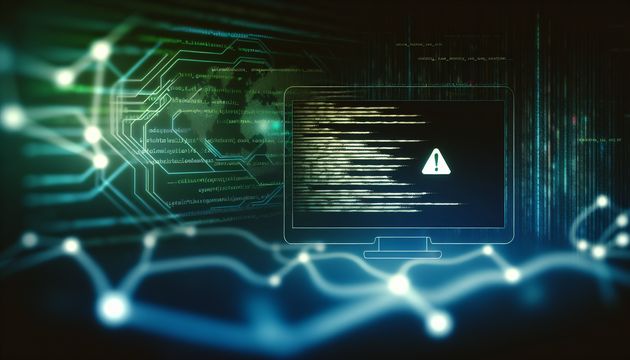
The Rise and Impact of Royal and BlackSuit Ransomware Gangs
The Royal and BlackSuit ransomware gangs have significantly impacted the cybersecurity landscape. Emerging from the shadows of the infamous Conti syndicate, these groups quickly became notorious for their sophisticated ransomware operations. Initially appearing as Quantum ransomware in early 2022, they soon evolved into the Royal ransomware, developing their own encryptors like the Zeon encryptor, which marked a pivotal shift in their operations (BleepingComputer).
Their tactics were not only innovative but also devastating, employing double-extortion methods that targeted critical sectors such as healthcare and government services. This approach not only encrypted victims’ data but also threatened to leak sensitive information unless ransoms were paid (ICE). The financial impact was staggering, with ransom demands often exceeding hundreds of millions of dollars (CyberScoop).
The Rise and Fall of Royal and BlackSuit Ransomware Gangs
Emergence and Evolution
The Royal and BlackSuit ransomware gangs emerged as formidable threats in the cybercrime landscape, evolving from earlier ransomware operations. The group initially surfaced as Quantum ransomware in January 2022, believed to be a successor to the notorious Conti syndicate. The transition from Quantum to Royal marked a significant shift, as the group began developing its own encryptors, notably the Zeon encryptor, which led to the rebranding as Royal ransomware in September 2022 (BleepingComputer).
Operational Tactics and Techniques
The Royal and BlackSuit gangs employed sophisticated tactics, techniques, and procedures (TTPs) that made them particularly effective. Their operations were characterized by double-extortion tactics, where they encrypted victims’ systems and threatened to leak stolen data to coerce payments. This approach was devastating, especially for critical infrastructure sectors such as healthcare, education, and government services, where operational disruptions could have severe consequences (ICE).
The gangs also utilized voice-based social engineering to gain initial access to target networks, followed by deploying encryptors that targeted both local and remote storage for maximum impact. This method of attack was part of their ransomware-as-a-service (RaaS) model, which allowed them to scale operations and reach a wide range of victims (BleepingComputer).
Financial Impact and Ransom Demands
The financial impact of the Royal and BlackSuit ransomware operations was significant. Combined, the groups extorted over $370 million in ransom payments from their victims, based on present-day valuations of cryptocurrency. The ransom demands often exceeded $275 million, with some demands reaching over $500 million since the emergence of the BlackSuit brand (CyberScoop).
The gangs targeted over 450 known victims in the United States alone, affecting entities across various sectors, including healthcare, education, public safety, energy, and government. The scale and success of their operations underscored the effectiveness of their tactics and the vulnerabilities within critical infrastructure sectors (BleepingComputer).
Law Enforcement Actions and Dismantling
The dismantling of the Royal and BlackSuit ransomware gangs was a coordinated effort involving international law enforcement agencies. The operation, codenamed Operation Checkmate, was led by Europol in conjunction with U.S. Homeland Security Investigations (HSI), the FBI, and police forces from over nine countries, including Germany, France, and the United Kingdom. The takedown involved seizing the gangs’ dark web extortion domains and replacing their leak sites with seizure banners (The Realist Juggernaut).
This unprecedented international coordination was crucial in dismantling the entire ecosystem that enabled the gangs to operate with impunity. The operation not only targeted the technical infrastructure but also aimed to cut off the financial flows that fueled one of the most profitable ransomware campaigns in recent years (GBHackers).
Rebranding and Future Threats
Following the dismantling of their infrastructure, there is evidence to suggest that the BlackSuit ransomware gang may rebrand itself as Chaos ransomware. The Cisco Talos threat intelligence research group found similarities in the tactics, techniques, and procedures (TTPs) between BlackSuit and the new Chaos ransomware, indicating a potential rebranding or involvement of former members. This assessment is based on encryption commands, the theme and structure of ransom notes, and the use of LOLbins and RMM tools in their attacks (BleepingComputer).
While the previous section discussed the dismantling of the Royal and BlackSuit gangs, this section explores the potential re-emergence of their operations under a new guise. The rebranding efforts highlight the adaptability of cybercriminals and the ongoing threat they pose to global cybersecurity. As such, continuous vigilance and international cooperation remain essential in combating ransomware threats and protecting critical infrastructure sectors (CISA).
Final Thoughts
The dismantling of the Royal and BlackSuit ransomware gangs was a testament to the power of international cooperation. Operation Checkmate, led by Europol and involving agencies like the FBI and Homeland Security Investigations, successfully took down the infrastructure that supported these cybercriminals (The Realist Juggernaut). However, the potential rebranding of these groups into new entities like Chaos ransomware highlights the persistent threat they pose. As cybercriminals adapt and evolve, so too must our defenses, underscoring the need for continuous vigilance and collaboration among global cybersecurity stakeholders (CISA).
References
- BleepingComputer. (2022). Royal and BlackSuit ransomware gangs hit over 450 US companies. https://www.bleepingcomputer.com/news/security/royal-and-blacksuit-ransomware-gangs-hit-over-450-us-companies/
- ICE. (2022). ICE Washington DC leads international takedown of BlackSuit ransomware infrastructure. https://www.ice.gov/news/releases/ice-washington-dc-leads-international-takedown-blacksuit-ransomware-infrastructure
- CyberScoop. (2022). BlackSuit, Royal ransomware hit 450 US victims. https://www.cyberscoop.com/blacksuit-royal-ransomware-450-us-victims/
- The Realist Juggernaut. (2025). BlackSuit ransomware syndicate dismantled, $370M in ransom flows cut off, infrastructure seized. https://therealistjuggernaut.com/2025/08/08/blacksuit-ransomware-syndicate-dismantled-370m-in-ransom-flows-cut-off-infrastructure-seized/
- CISA. (2024). Royal ransomware actors rebrand as BlackSuit: FBI and CISA release update advisory. https://www.cisa.gov/news-events/alerts/2024/08/07/royal-ransomware-actors-rebrand-blacksuit-fbi-and-cisa-release-update-advisory
Emerging Technologies and Ransomware
In the ever-evolving world of cybersecurity, emerging technologies like AI and IoT are playing a dual role. On one hand, they offer new tools for defense, enabling faster detection and response to threats. On the other hand, they also present new vulnerabilities that cybercriminals can exploit. For instance, AI can be used to automate and enhance ransomware attacks, making them more efficient and harder to detect. Similarly, the proliferation of IoT devices increases the attack surface, providing more entry points for ransomware gangs. As these technologies continue to evolve, so too must our strategies for defending against ransomware threats.



